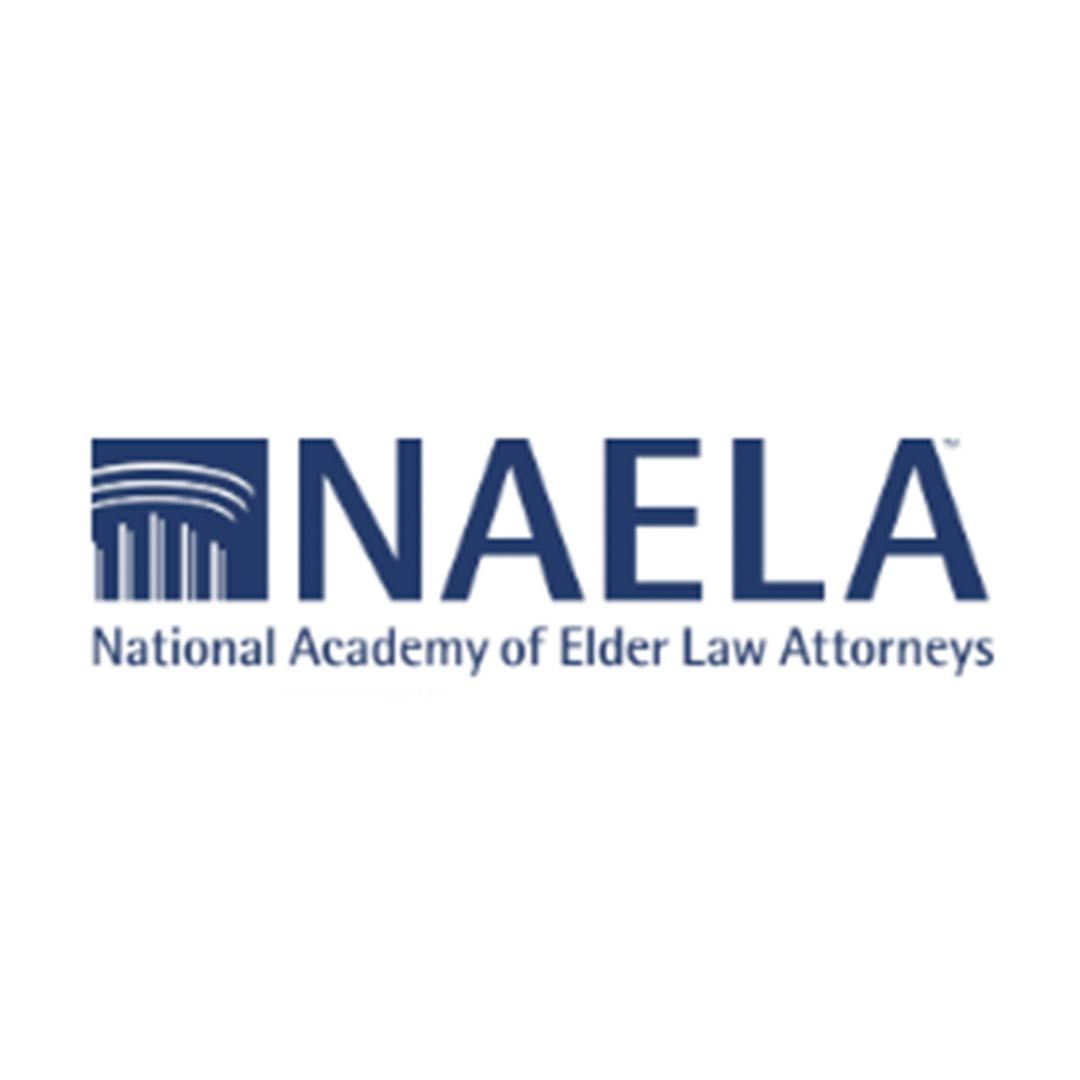Using Pooled Trusts as a Safety Net When Drafting Estate Plans
By: Rachel Baer, Esq. Counsel & Director of New Clients.
I. Introduction
Pooled special needs trusts can provide an essential safety net in estate plans. Attorneys who draft estate plans must anticipate the unexpected, a client’s unforeseen disability, a fiduciary who becomes ill, a contentious relationship between the beneficiary and the fiduciary, or assets that are depleted below the corporate fiduciary’s minimum. By including additional authorities in documents, attorneys-in-fact, executors, and trustees can react to unforeseen circumstances and create and fund pooled special needs trusts for clients and their loved ones without the need for court involvement. This article will give an overview of pooled special needs trusts and will cover powers that should be considered for inclusion in trusts, wills, and powers of attorney to utilize pooled special needs trusts as a safety net.[1]
II. Overview of Pooled Special Needs Trusts
There are two types of special needs trusts—standalone special needs trusts created under a trust document or will, and pooled special needs trusts. Fundamentally, both types of special needs trusts allow assets to be set aside for the benefit of a beneficiary with a disability without those assets being considered resources that might impact the beneficiary’s eligibility for Supplemental Security Income (SSI) and Medicaid. And, like standalone special needs trusts, pooled special needs trusts can be either first-party or third-party, most pooled trusts will have one of each type to allow both beneficiaries with disabilities and their loved ones to fund them.
Pooled special needs trusts are different than standalone special needs trusts in several ways. First, while a standalone special needs trust generally has one beneficiary[2], pooled special needs trusts can have hundreds or thousands of beneficiaries. A standalone special needs trust is drafted for a particular beneficiary and contains all the necessary terms, including the identity of the beneficiary, the identity of the person who is establishing the trust, and the remainder beneficiaries. A pooled special needs trust master trust agreement provides the basic terms of administration, but the joinder agreement signed by the beneficiary or an authorized person to join the pooled special needs trust fills in missing pieces of the master trust agreement with the details of (1) the beneficiary, (2) the identity of the person signing the joinder agreement, and (3) the remainder beneficiaries (if that particular pooled trust allows remainder beneficiaries to be named).
Second, pooled special needs trusts are established and managed by a non-profit organization.[3] In order to be allowed to administer first-party pooled special needs trusts, the Social Security Administration requires not only that the pooled trust must be set up by the non-profit organization, but the non-profit organization must maintain managerial control.[4] This managerial control is a distinct role from the role as trustee. While some pooled trust non-profit organizations, which are commonly referred to as “pooled trust administrators” or “pooled trust managers,” also serve as trustee, other non-profit organizations employ a trust company, bank, or other professional to serve as trustee for the pooled special needs trust. In a pooled special needs trust, there are three unique roles played by (1) the trustee, (2) the non-profit trust administrator, and the (3) investment advisor. There can be some entities that will fill multiple roles, like a trustee that also serves as financial advisor or a non-profit organization that also serves as trustee, but these three roles exist in every pooled special needs trust. Whereas for a standalone special needs trust, the client must find a trustee and financial advisor.
Third, separate accounts, also referred to as a sub-accounts, are maintained for each beneficiary, but the funds in all the accounts are pooled together for investment and management purposes.[5] This structure is similar to an attorney’s Interest on Lawyer’s Trust Account (IOLTA); the clients’ funds are held in one account but accounted for separately. Due to the term “pooled” in “pooled trust,” there can be a misconception that the funds that an individual beneficiary puts into a pooled trust will be used for other beneficiaries. However, funds placed into a beneficiary’s sub-account can only be used for that beneficiary during his or her lifetime. Because the funds are pooled, this increases the capital available for investment and can lead to lower investment fees and the access to greater investment opportunities.[6] It is also important to note that due to the pooled structure, some pooled trusts will not accept unique assets, like inherited individual retirement accounts (IRAs) or real estate.
Fourth, pooled special needs trusts each have differing policies on how they administer the remaining funds after a beneficiary passes away. All first-party special needs trusts, both standalone and pooled, are prohibited from distributing funds to remainder beneficiaries unless Medicaid is fully reimbursed for all payments made for the beneficiary during their lifetime.[7] However, federal law permits the pooled trust to retain the remaining funds in lieu of repaying Medicaid. [8] For first-party pooled trusts, some non-profit organizations retain all the remaining funds in lieu of repaying Medicaid, which means that their joinder agreement might not include the ability to list remainder beneficiaries. Other pooled trusts only retain a percentage of the remainder or only when there are insufficient funds to repay Medicaid fully, which would give remainder beneficiaries a chance to receive funds if there are sufficient funds to repay Medicaid. For third-party pooled special needs trusts, some pooled trusts do not retain any part of the remainder funds, while some may keep a percentage. It is critical that the attorney and their clients understand this policy before choosing a pooled special needs trust.[9]
Fifth, first-party pooled special needs trust sub-accounts may be established and funded for beneficiaries who are sixty-five years of age or older, whereas once the beneficiary reaches the age of sixty-five federal law prohibits standalone first-party special needs trusts from being established or new sources of funds from being deposited into an existing trust.[10] But, even though it is permitted to establish and fund a first-party pooled special needs trust after the beneficiary is sixty-five years old, some states impose a transfer of assets penalty if the beneficiary is then receiving Medicaid long-term services and supports (“LTSS”), like long-term institutional care or home and community-based services, or applies for LTSS in the following five years.[11] However, for beneficiaries who have reached the age of sixty-five, first-party pooled special needs trusts are their only option.
III. Drafting Standalone or Testamentary Special Needs Trusts
Serving as trustee of a special needs trust requires specialized knowledge regarding applicable federal and state statutes and rules, in addition to the regular duties of a trustee. At times, a trustee will be unable or unwilling to serve or to continue to serve as trustee. Family members may lack the time or expertise, they might have health problems, or their role as trustee may compromise their relationship with the beneficiary. Individual attorneys can leave the practice of law and corporate trustees may struggle to maintain a special needs trust once the balance falls below their minimum requirements. In those cases, even though a pooled special needs trust was not Plan A, it can be an excellent Plan B.
When setting up a standalone or testamentary special needs trust, if the trustee is given proper authority, then trust assets can be transferred to a pooled special needs trust sub-account if the trustee becomes unable or unwilling to serve. The assets in the standalone or testamentary special needs trust can be transferred to a pooled special needs trust sub-account if (1) the original trust gives authority to transfer assets to the pooled special needs trust sub-account, (2) decanting is permitted under state law[12] in the state where the original trust is sitused (after the decanting process is completed), or (3) a court of appropriate jurisdiction approves the transfer of assets. Of these three options, the first option—where the drafting attorney has included a provision to authorize the trustee to transfer assets to the pooled special needs trust sub-account—is the simplest process. Decanting is a formal and technical process that requires attorneys to draft notices and decanting agreements. Even if decanting is permitted, it may still be necessary or prudent to seek court approval in some circumstances. And, for those where decanting is not feasible or permitted by state law, then petitioning the court for permission can be an expensive and time-consuming prospect.
Drafting attorneys should include language that gives the trustee of a special needs trust the discretion to transfer assets from an individual special needs trust to a pooled special needs trust sub-account.[13] After a transfer, the funds will be governed by the terms of the pooled trust master trust agreement and, if applicable, the original trustee will wind down the original trust.
Example: My Trustee may at any time, exercising sole discretion, distribute any income or principal held in [name of special needs trust], up to the entire value of the trust corpus, to the Trustee of the Commonwealth Community Trust [Third-Party OR First-Party] Pooled Special Needs Trust for the benefit of or a similar pooled special needs trust. I authorize my Trustee to sign all joinders and other documents and take all steps necessary to establish the sub-account and to facilitate the transfer of the trust assets to the [third-party OR first-party] sub-account for the benefit of.
Unless otherwise specified in the original trust or permitted by court order or state law, the remainder beneficiaries listed in the pooled special needs trust sub-account should mirror the remainder beneficiaries for the special needs trust in the original trust to avoid shifting beneficial interests.[14]
It is also important to note that depending on the type of special needs trust (first-party or third-party) and the terms of the pooled special needs trust master trust agreement, the pooled special needs trust may be unable to honor powers of appointment that are not exercised prior to the transfer. Further, first-party pooled special needs trusts are prohibited from paying for funeral expenses unless Medicaid has been fully repaid, so those expenses should be pre-paid using sub-account funds during the beneficiary’s lifetime if possible.[15]
IV. Drafting Other Types of Trusts or Wills
Most wills and trusts drafted by estate planning attorneys will include a list of alternate methods of distribution that give the fiduciaries flexibility in case of unexpected disability or minority. Alongside those authorities, drafters should give fiduciaries the authority and discretion to make distributions to a pooled special needs trust sub-account in lieu of an outright distribution to a beneficiary.
Example: At any time that my [Executor / Trustee] is directed or authorized to make a distribution of interest or principal to a beneficiary, my [Executor / Trustee] may, exercising sole discretion and without the necessity of a court order, pay such income or principal to Trustee of the Commonwealth Community Trust Pooled Special Needs Trust for the benefit of the beneficiary, or a similar pooled special needs trust sub-account, in lieu of making a distribution to the beneficiary.
Please note that this provision does not specify whether the funds should be deposited into a first-party or third-party pooled special needs trust sub-account. This determination should be made by the attorney at the time that funds are to be transferred, and the answer will depend on state law and whether the funds are determined to have vested in the beneficiary. If the bequest has vested in the beneficiary, then the funds will likely be considered “assets of an individual who is disabled”[16] and should be placed into a first-party pooled special needs trust.[17] This provision should allow fiduciaries to distribute funds without the need for a costly court order.
V. Drafting Powers of Attorney
Powers of attorney are the most powerful and often underutilized documents in the estate planning toolkit. By incorporating the necessary authorities, agents (more traditionally referred to as attorneys-in-fact) can be given the ability to plan on behalf of the principal and to complete any plans the principal began. The entire estate plan of a client can be strengthened by giving fiduciaries the authority to create, fund, and manage pooled special needs trust sub-accounts.
While the law differs from state to state,[18] generally the ability to establish a trust, including a special needs trust, is a power that must be explicitly granted in the power of attorney.[19] If this authority is not given in the power of attorney or state law, then the agent lacks the power to establish a special needs trust. In addition, if the power is given, but limited to establishing revocable trusts, then the agent lacks the power to establish a first-party special needs trust, whether standalone or pooled, because they are irrevocable trusts.
In addition, the power of attorney should give the authority to transfer the principal’s assets into an irrevocable or simply any inter vivos trust.[20] Limitations on funding irrevocable trusts will prevent the agent from being able to fund a first-party special needs trust for the beneficiary.[21]
Finally, the attorney should carefully consider terms limiting the agent from using the principal’s property to benefit the agent. If this term is placed in the power of attorney instrument, then this could be interpreted to prohibit the agent from being listed as a remainder beneficiary, even if he or she is a beneficiary of the principal’s estate plan.[22]
Drafting attorneys should consider adding the following authorities to powers of attorney to allow the agent to do emergency planning for both the principal and their loved ones.[23]
1. Establishing and funding a first-party pooled special needs trust sub-account for the principal.
Federal law permits an agent under a valid power of attorney to establish a first-party pooled special needs trust for the principal on behalf of the principal.[24]
Example: My Agent is authorized to (1) execute a pooled trust sub-account joinder agreement with Commonwealth Community Trust or another pooled special needs trust on my behalf, pursuant to 42 U.S.C. 1396p(d)(4)(c); (2) assign, transfer, deliver, and convey any and all of my assets, including any rights to receive income or assets from any source, to the Trustee of the pooled special needs trust sub-account for my sole benefit; (3) designate the remainder beneficiaries for the sub-account [or specify remainder beneficiaries]; and (4) make requests for disbursements and receive and use the disbursements on my behalf.
2. Establishing a third-party pooled special needs trust sub-account for the principal’s loved ones.
Giving the authority to establish and fund a third-party pooled special needs trust will allow an agent to do special needs planning for the principal’s loved ones.
Example: My Agent is authorized to (1) execute a pooled third-party trust sub-account joinder agreement with Commonwealth Community Trust or another pooled special needs trust for ; (2) designate the remainder beneficiaries for the sub-account [or specify remainder beneficiaries] ; (3) assign, transfer, deliver, and convey any and all of my assets, including any rights to receive income or assets from any source, in keeping with my Agent’s authority to make gifts to the Beneficiary of the sub-account, to the Trustee of the pooled special needs trust sub-account; (4) update pay on death, transfer on death, and other beneficiary designations that listed the Beneficiary of the sub-account to list the Trustee of the pooled special needs trust sub-account; (5) amend any trusts that I might have to update any bequests to the beneficiary of the sub-account to list the Trustee of the pooled special needs trust sub-account and (6) make requests for disbursements from the sub-account and receive and use the disbursements on the Beneficiary’s behalf.
3. Establishing and funding a first-party pooled special needs trust sub-account for the principal’s child or grandchild.
Federal law permits an agent under a valid power of attorney to establish a first-party pooled special needs trust for the principal’s child or grandchild on behalf of the principal.22
Example: My Agent is authorized to (1) execute a 42 U.S.C. 1396p(d)(4)(c) pooled trust sub-account joinder agreement with Commonwealth Community Trust or another pooled special needs trust on behalf of my child or grandchild [or insert names], (2) designate the remainder beneficiaries for the sub-account, and (3) make requests for disbursements and receive and use the disbursements for the Beneficiary.
4. Establishing & funding a first-party pooled special needs trust sub-account for the principal’s loved ones other than a child or grandchild.
Giving authority to use the principal’s funds will allow the agent to petition the court to establish and permit funding of a first-party pooled special needs trust for a loved one of the principal other than a child or grandchild, like a spouse or parent.[25]
Example: My Agent is authorized to use my funds to petition a court to create and fund a 42 U.S.C. 1396p(d)(4)(c) pooled trust sub-account with Commonwealth Community Trust or another pooled special needs trust on behalf of.
VI. Conclusion
Giving fiduciaries the authority to utilize pooled special needs trusts can save the client thousands of dollars in attorneys bills and weeks or months in unnecessary delays as the fiduciaries respond to unexpected circumstances. Empowering fiduciaries with the flexibility to use pooled special needs trusts as a safety net will result in more robust estate plans that better protect clients and their families.
Appendix: Corollary Powers for ABLE Accounts
In addition to and in conjunction with pooled special needs trusts, ABLE accounts are a beneficial tool to set aside funds for individuals whose disability began before the age of twenty-six without impacting their eligibility for Supplemental Security Income (SSI) and Medicaid.[26] Further, starting January 1, 2026, the eligibility criteria will change so that individuals whose disability began before the age of forty-six can open an ABLE account, which will allow far more people to qualify. In 2025, up to $19,000 can be put into an ABLE account for each beneficiary per year.[27]
1. Authority to transfer funds from a special needs trust to an ABLE account.
Drafters can give the trustee of a special needs trust the authority and discretion to make distributions to an ABLE account for the beneficiary. This authority can be particularly useful since ABLE accounts can be used to pay shelter expenses, which are considered qualified disability expenses, without reducing the beneficiary’s SSI payment.[28]
Example: The Trustee may, exercising sole discretion, transfer funds to an ABLE account established for the Beneficiary, up to the annual ABLE contribution limit.
2. Authority to transfer funds from a will or trust to an ABLE account.
Drafters should give the fiduciaries (whether executors or trustees) the authority and discretion to make distributions to an ABLE account in lieu of an outright distribution to the beneficiary.
Example: At any time that my [Executor / Trustee] is directed or authorized to make a distribution of interest or principal to a beneficiary, my [Executor / Trustee] may, exercising sole discretion and without the necessity of a court order, pay such income or principal to an ABLE account established for the Beneficiary.
3. Authority to set up and fund an ABLE account for the principal.
Example: My Agent shall have the power to: (1) open an ABLE account for me; (2) transfer and deposit any of my assets into my ABLE account; (3) withdraw, now or in the future, any funds from my ABLE account; (4) select the investment option(s) in accordance with the terms provided by the ABLE account; (5) change the beneficiary of my ABLE account in accordance with Section 529A of the Internal Revenue Code; (6) transfer funds from a 529 college savings plan to my ABLE account, as permitted by federal and state law; and (7) make representations and certifications on my behalf and to otherwise manage and enter into all other lawful transactions with respect to my ABLE account that I could perform if present.[29]
4. Authority to set an ABLE account for the principal’s spouse, descendants, or siblings.
Example: My Agent is authorized to open an ABLE account and designate my spouse, my descendants, or my siblings as the beneficiary.[30]
5. Authority to contribute from the principal’s assets into an ABLE account for any person to whom the agent can make gifts.
Example: My Agent is authorized to contribute my funds, up to the annual ABLE contribution limit, to any ABLE account for any person to whom my Agent is authorized to make gifts. Further, my Agent is authorized to transfer funds from a 529 college savings plan to an ABLE account, as permitted by federal and state law.
Rachel Baer, Esq.
Rachel Baer, Esq. is Counsel and Director of New Clients at Commonwealth Community Trust (CCT), a non-profit pooled trust administrator that has served over 3,000 beneficiaries across the United States who are vulnerable or have a disability. Ms. Baer leads the New Client team at CCT and works with attorneys and other professionals as their clients join CCT.
Ms. Baer is a fiduciary attorney member of the Special Needs Alliance, a national, non-profit collective of many of America’s leading disability and public benefits attorneys, as well as the National Academy of Elder Law Attorneys. Ms. Baer frequently teaches continuing education classes on special needs trusts and preserving public benefits to professional organizations, including the Stetson University Law National Conference on Special Needs Planning and Special Needs Trusts, Practicing Law Institute, MyLawCLE, Virginia CLE, the State Bar of Georgia Annual Special Needs Trust Program, the Alabama State Bar Annual Conference, the Wyoming State Bar Annual Meeting, and the American College of Financial Services – Advanced Special Needs Planning Symposium.
Prior to joining CCT, Ms. Baer was a partner at Family First Law Group, PLLC, in Alexandria, Virginia, and her practice focused on estate planning, estate and trust administration, and guardianship and conservatorship. Before entering private practice in 2012, Ms. Baer served as an Assistant Attorney General in the Virginia Attorney General’s Health Services Section for two years.
[1] While there are examples of language that can be included in estate planning documents throughout this paper, they are not intended as legal advice. Any provisions included in estate planning documents should be reviewed and edited by the drafting attorney to meet the needs of their clients and to ensure compliance with their state’s law.
Attached as an appendix is an overview of corollary powers to create and fund an ABLE account.
[2] While standalone first-party special needs trusts can only have one beneficiary, some standalone or testamentary third-party special needs trusts may be drafted to have multiple beneficiaries.
[3] 42 U.S.C. § 1396p(d)(4)(C)(i).
The non-profit organization should be overseen by a fully independent board of directors comprised of qualified individuals to ensure proper governance.
[4] Social Security POMS SI 01120.225.
[5] For first-party pooled special needs trusts, this organizational structure is required by 42 U.S.C. § 1396p(d)(4)(C)(ii).
[6] Due to the funds being invested, there is never any guarantee of returns.
[7] 42 U.S.C. §§ 1396p(d)(4)(A), (d)(4)(C)(iv).
[8] 42 U.S.C. § 1396p(d)(4)(C)(iv); Social Security POMS SI 01120.203(D)(8).
Despite the federal allowance, some states have set limitations on what percentage the pooled trust may retain. Examples include North Carolina (N.C.G.S. § 36D-6) and Georgia (Georgia DFCS Medicaid Policy Manual Section 2337-2).
[9] The pooled special needs trust’s remainder policy should be easily available on their website and included in their joinder agreements.
[10] 42 U.S.C. § 1396p(d)(4)(A).
Social Security POMS SI 01120.203(B)(3)
[11] Department of Health & Human Services, Centers for Medicare & Medicaid Services, May 12, 2008, State Agency Regional Bulletin No. 2008-05Medicaid Eligibility – Application of Transfer of Assets Penalty for Pooled Trust.
[12] According to the Uniform Law Commission, as of September 2024, eighteen states have enacted the 2015 Uniform Decanting Act, and it has been introduced in two additional states.
In addition, many other states have their own decanting statutes that were enacted prior to the Uniform Law Commission proposing the Uniform Decanting Act in 2015.
[13] If the original trust is a first-party special needs trust, even with the authority to transfer the funds into a first-party pooled special needs trust, the joinder agreement must still be signed by the beneficiary, either themselves or by their agent under a power of attorney with the necessary authorities; the beneficiary’s parent, grandparent, or legal guardian; or a court. 42 U.S.C. § 1396p(d)(4)(C)(iii); Social Security POMS SI 01120.203(D)(6).
[14] Except as it relates to the beneficiary with a disability, the second special needs trust receiving assets from the first trust “must grant each other beneficiary of the first trust beneficial interests in the second trusts which are substantially similar to the beneficiary’s beneficial interests in the first trust.” Uniform Trust Decanting Act, Section 13(c)(3).
“‘Beneficiary’ means a person that: (A) has a present or future, vested or contingent, beneficial interest in a trust; (B) holds a power of appointment over trust property; or (C) is an identified charitable organization that will or may receive distributions under the terms of the trust.” Uniform Trust Decanting Act, Section 2(4).
[15] Social Security POMS SI 01120.203(E)(2).
Some third-party pooled special needs trusts may also not be permitted by their master trust agreement or policy to pay funeral expenses after the beneficiary passes away. In these cases, the funeral expenses should be pre-paid from the sub-account before the beneficiary passes away.
[16] 42 U.S.C. § 1396p(d)(4)(C).
[17] Even with the authority to transfer the funds into a first-party pooled special needs trust, the joinder agreement must still be signed by the beneficiary, either themselves or by their agent under a power of attorney with the necessary authorities; the beneficiary’s parent, grandparent, or legal guardian; or a court. 42 U.S.C. § 1396p(d)(4)(C)(iii); Social Security POMS SI 01120.203(D)(6).
[18] According to the Uniform Law Commission, as of September 2024, thirty-two states/jurisdictions have enacted the 2006 Uniform Power of Attorney Act, and it has been introduced in two additional states. In addition, eight states/jurisdictions have enacted a previous version of the Uniform Power of Attorney Act.
[19] Uniform Power of Attorney Act, Section 201(a)(1) only permits the agent to create an inter vivos trust is if authority is explicitly given in the power of attorney document.
A 2022 Massachusetts Supreme Court decision raised doubts as to whether a principal can delegate the authority to create a trust to their agent under current Massachusetts law. Barbetti v. Stempniewicz, 490 Mass. 98 (2022).
In 2023, the Uniform Power of Act legislation was introduced to the Massachusetts legislature, which includes the authority to create an inter vivos trust. Bill H.1523.
[20] “Attempting to establish a [pooled trust sub-account] with the assets of another individual without proper legal authority to act with respect to the assets of that individual will generally result in an invalid trust under State law.” Social Security POMS SI 01120.203(D)(6)(b).
[21] Uniform Power of Attorney Act, Section 211(b)(7) only permits the transfer of the principal’s assets into a revocable trust.
[22] Uniform Power of Attorney Act, Section 201(b) includes the term: “An agent that is not my ancestor, spouse, or descendant MAY NOT use my property to benefit the agent or a person to whom the agent owes an obligation of support unless I have included that authority in the Special Instructions.” In this case, it would be important to consider the principal’s entire estate plan when deciding whether to include terms in the Special Instructions to allow the agent who is not an ancestor, descendant, or spouse to list themselves as a remainder beneficiary.
[23] However, if state law does not permit a principal to delegate the authority to create a trust to an agent, then these authorities will not have full effect.
[24] Social Security POMS SI 01120.203(D)(6).
[25] A first-party pooled special needs trust joinder agreement must be signed by the beneficiary, either themselves or by their agent under a power of attorney with the necessary authorities; the beneficiary’s parent, grandparent, or legal guardian; or a court. 42 U.S.C. § 1396p(d)(4)(C)(iii); Social Security POMS SI 01120.203(D)(6).
[26] Although after the balance of the ABLE account reaches $100,000.00, then the beneficiary’s SSI payments will be suspended until the balance falls below $100,000.00. Letter from Centers for Medicaid and Medicare Services, Re: Implications of the ABLE Act for State Medicaid Programs, footnote 5.
https://www.medicaid.gov/federal-policy-guidance/downloads/smd17002.pdf
[27] This contribution limit is tied to the federal annual exclusion for gifts. 26 USC § 529A(b)(2).
[28] 26 U.S.C. § 529A(e)(5).
[29] This provision is adapted from the Virginia ABLEnow Durable Limited Power of Attorney form. https://www.ablenow.com/uploads/documents/ABLEnow_Durable_Limited_POA_Form.pdf
[30] The ABLE Act is far more expansive in its list of persons who can establish an ABLE Account for the beneficiary: the beneficiary themselves; their agent under a power of attorney; their guardian or conservator; their spouse, parent, sibling, or grandparent; or their Social Security representative payee. 26 CFR 1.529A-2(c)(1)(i)(C).
Published in NAEPC Journal of Estate & Tax Planning, Issue 46 - May, 2025.




